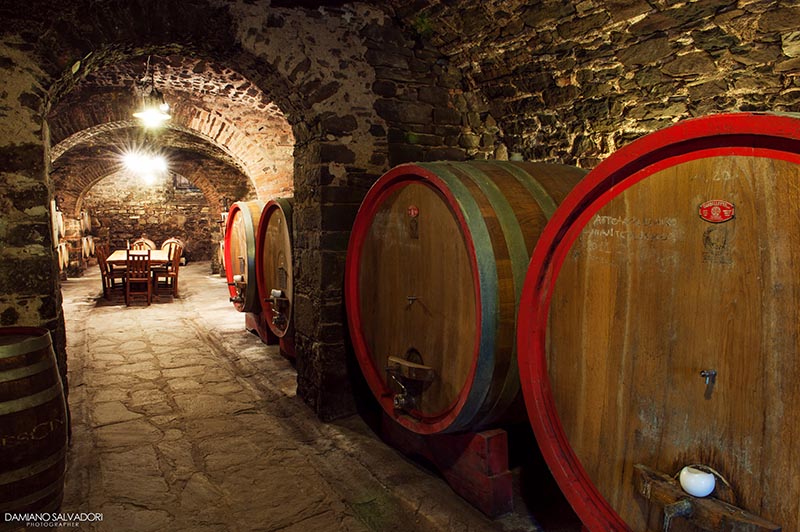

History of Castelvecchi
An ancient village of early medieval origin
Castelvecchi is a village of early medieval origin, already mentioned in some rare documents as “Castello et curtis”. This term means that the “curtis” was equipped with some defensive work. Surely it was equipped with walls. The arrangement in regular rows of the wall structures facing the outside of some houses in the village suggest that they must have been an integral part of the fortification.
In their arrangement, they would follow the trend of the wall circuit delimiting the current square, originally the parade ground of the fortified village.
In the early Middle Ages the locality must have been the main settlement in the area, located near an ancient Roman road. It is in correspondence with this settlement that a few years after the year 1000, the Pieve di Santa Maria Novella whose bell tower became the geographical center of the communities of the Chianti League, an alliance for war purposes of the territories of the Republic of Florence.
In the pre-communal age (1043 AD), however, the locality was already mentioned in the “Carte dei Capitani di Parte Guelfa” as “Novella judicaria fiorentina”. Probable accomandigia of the Bishoprics of Florence and Fiesole, subsequently, freeing itself from the vassals of the Castle of Monte Rinaldi, it proclaimed itself an autonomous community. Towards the end of the 13th century it underwent ferocious attacks by the lords of Monte Rinaldi from which it had freed itself, which culminated in acts of violence and destruction.
This also happened due to the incredible wealth enjoyed by the locality with the underlying Pieve di S. Maria Novella, wealth and importance which further grew even in the age of the municipal communities (Terzieri di Gaiole, Terziere di Castellina and Radda) of the Lega del Chianti with headquarters in Radda, seat of its powers (1384).
During the eighteenth century, with the official dissolution of the Chianti League which in the meantime had become a structure with purely administrative tasks, and with the consequent “partition” of its territories between the Archbishopric of Fiesole and the Grand Duchy of Tuscany, the locality – which became one of the main Fattorie del Chianti – became the property of a “priest and man of the church reporting directly to the Vatican”, Don Urbano de’ Vecchi – from which it took its current name by adding it to the appellation “castle”.
Then it also assumed the definitive urban physiognomy for the insertion of the new manor house inside the village, the contextual construction of the park and partial demolition of the walls. The current owner is Giovanni Catania (de Vecchi Gutierrez de La Solana, a family that has owned the Borgo for centuries).
The only thing left of the ancient sixteenth-century manor house was the task of closing off the ancient courtyard and well, joining perfectly to the new and more imposing manor structure. The ancient and historic aging cellars, all built in vaults, with “facing stone” and paved in sandstone, wind mainly under part of the eighteenth-century villa and under that of the original manor house.
In particular, in one of its long corridors you can still see the original openings typical of the ancient manors, today located below ground level due to the natural elevation of the soil. The large barrels of this “museum” corridor – lit with candles and all secular and in chestnut – still represent recognition of the ancient agricultural tradition of the locality.
The Church (called Oratorio di San Michele) consists of an eighteenth-century structure leaning against the “new villa” at the time of construction of the latter. It presents a valuable example of a “bellows” organ from the 1600s as well as all its complete seventeenth-eighteenth-century furnishings and fittings (chasubles, chalices, etc.). The particularity of this cult structure is represented by the considerable size it presents in relation to its strictly private nature.
The Castelvecchi restaurant was created by bringing the old oil mill of the farm back to its original distribution of rooms, which has already been abandoned for a long time. Inside it represents the curious connection, through brick arches, of rooms of different centuries and structures that have gradually followed one another. The ancient and complete historical archive of the “ledgers” of the farm and of the agrarian relations between sharecroppers is preserved and ordered by the Superintendence of Siena as one of the very few received intact with registrations starting from the early 19th century.

BORGO CASTELVECCHI, YOUR SECOND HOME IN CHIANTI

BORGO CASTELVECCHI APARTMENTS AND ROOMS










